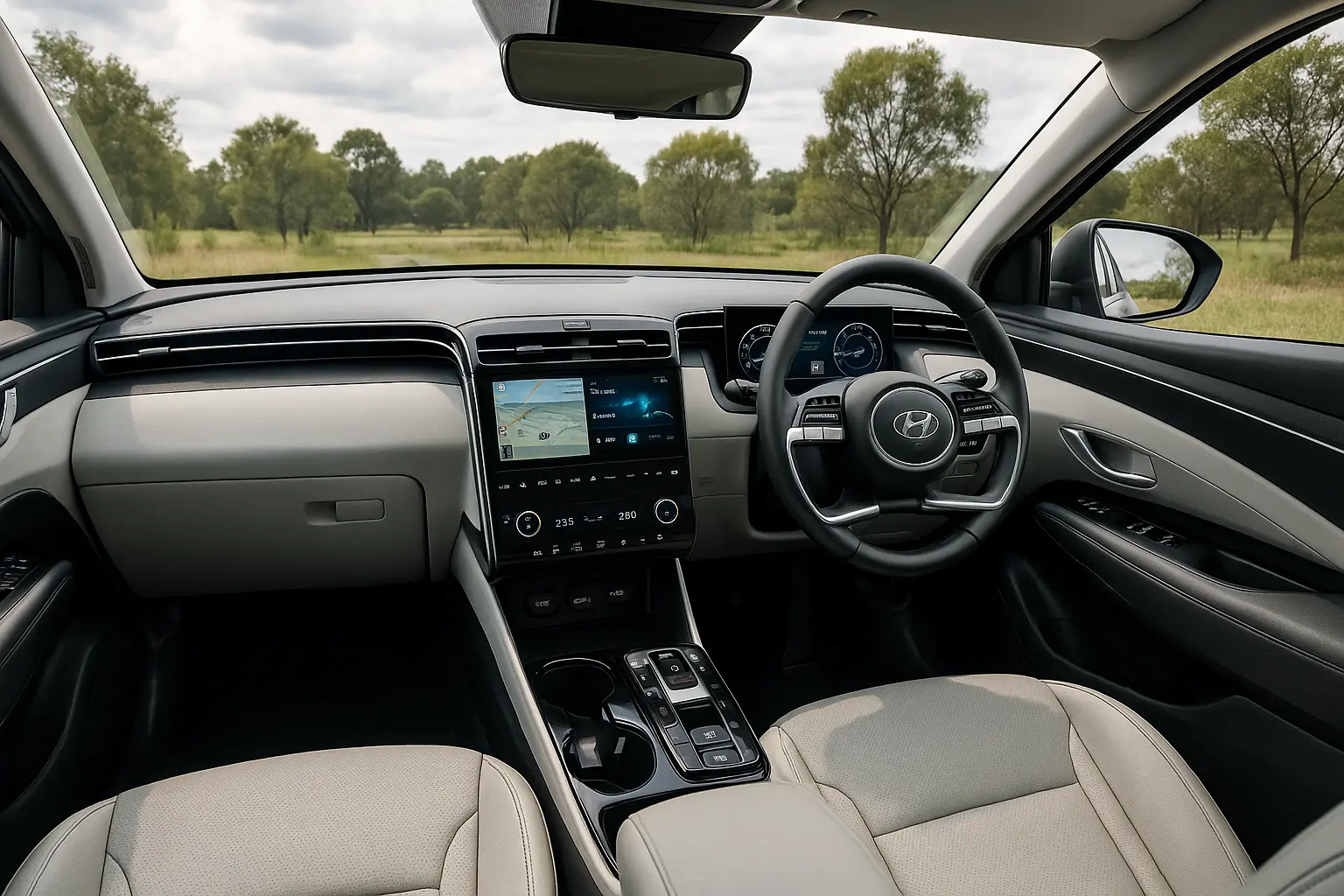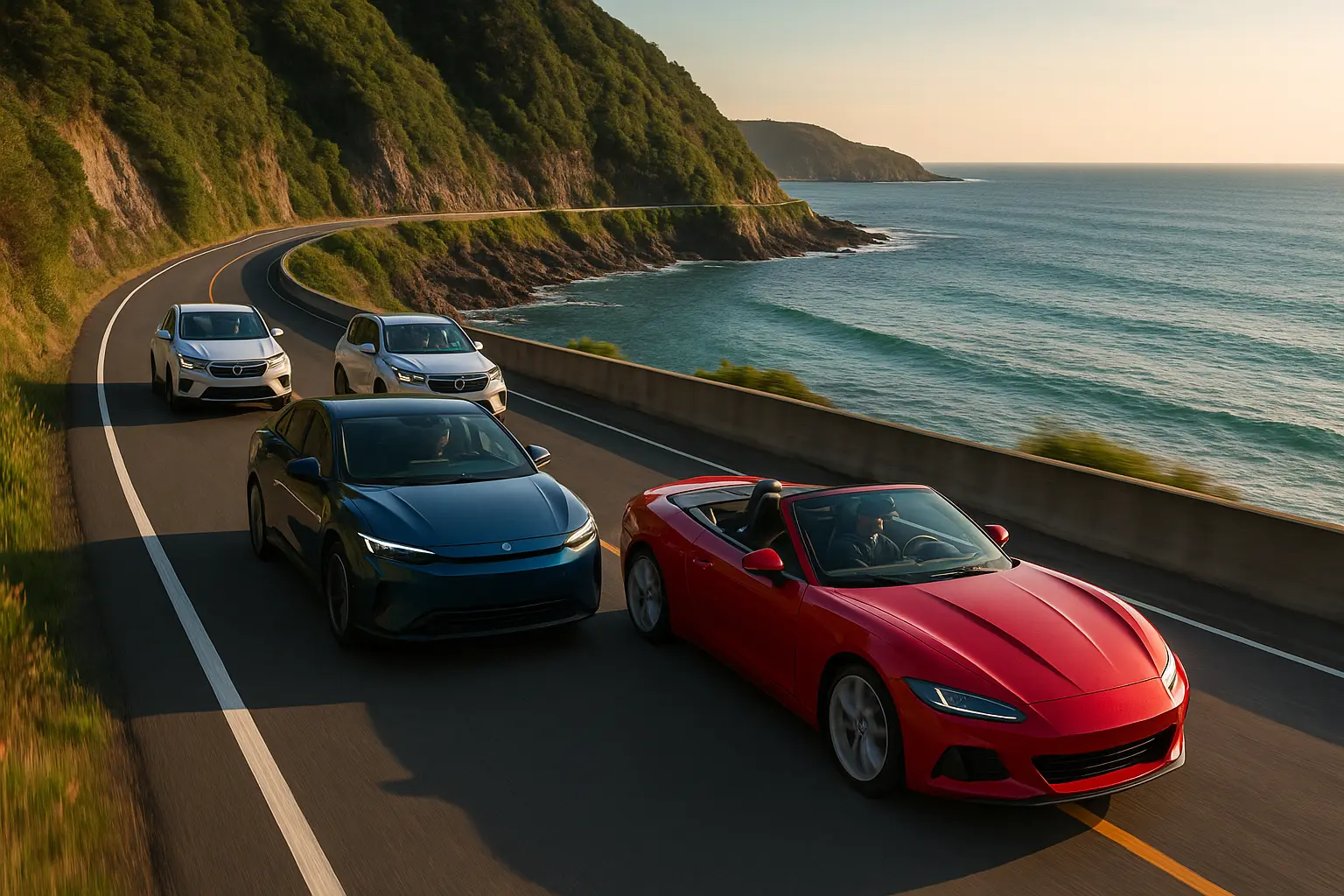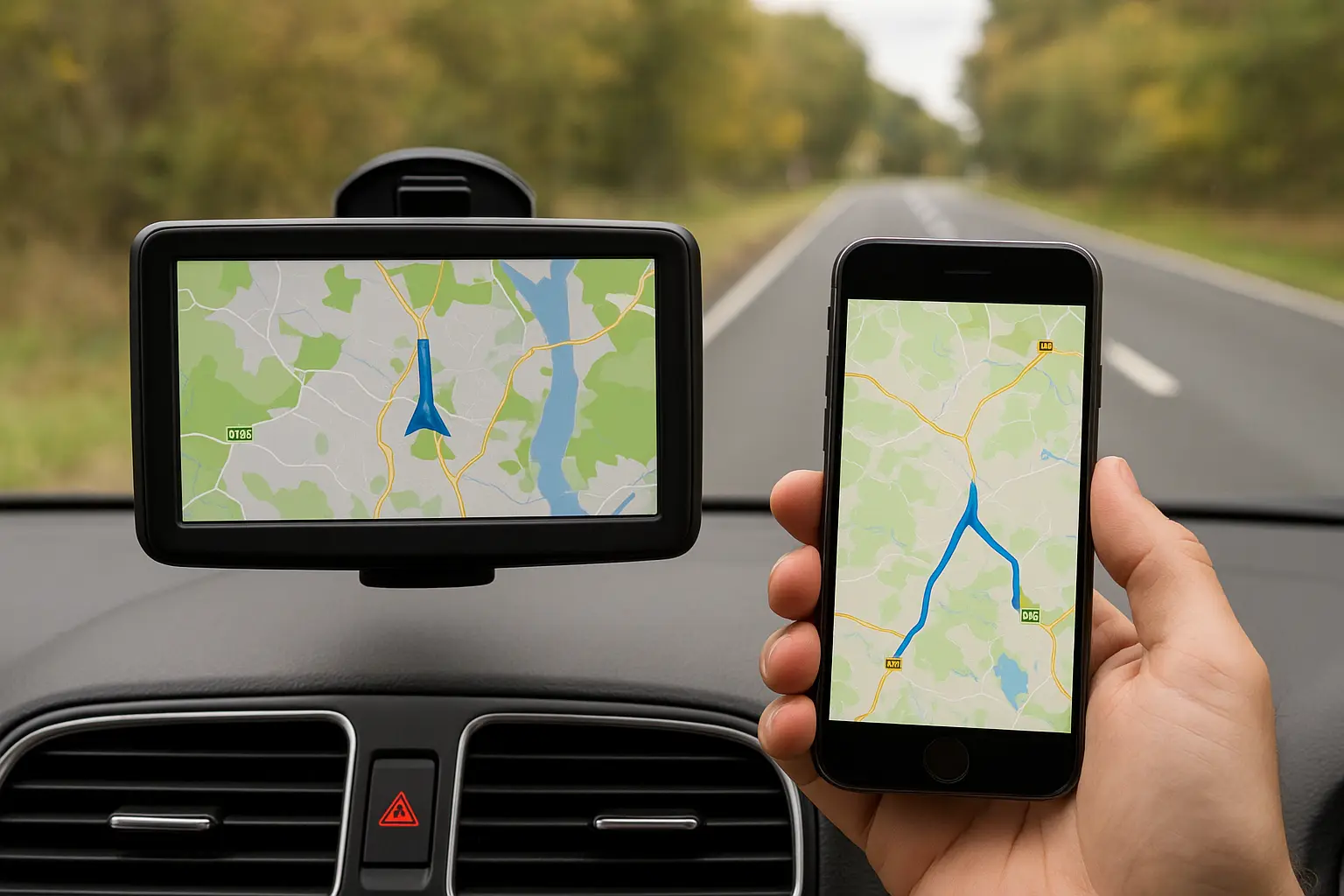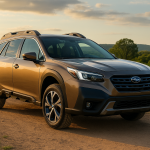The Hyundai Tucson has long been a strong player in Australia’s mid-size SUV market. Known for its stylish design, practical interior, and generous feature list, the Tucson has carved out a space between premium aspirations and mainstream pricing. For 2025, Hyundai has refined the Tucson to keep it competitive in a segment that includes some of Australia’s most popular vehicles, such as the Toyota RAV4, Mazda CX-5, and Kia Sportage.
This in-depth review explores everything you need to know about the 2025 Hyundai Tucson — from its updated design and technology to its comfort, performance, safety features, and overall value proposition.
2025 Hyundai Tucson – Tech, Comfort and Value in One SUV
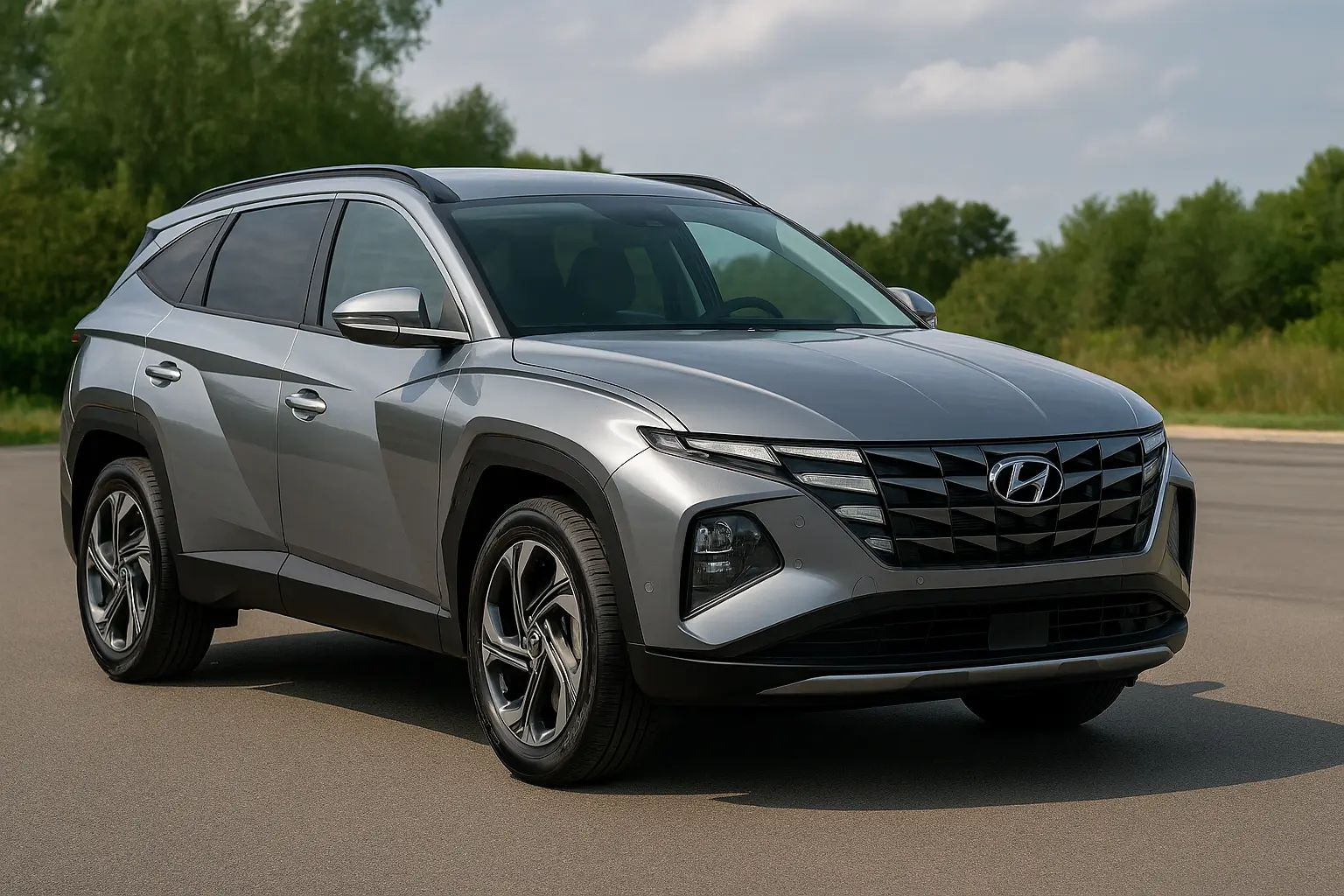
Exterior Design – A Bold and Modern Statement
Hyundai’s design philosophy, “Sensuous Sportiness,” continues to define the Tucson’s exterior, but for 2025, subtle updates give it a fresher, more modern look. The front fascia is dominated by the brand’s signature parametric grille, now with a refined mesh pattern that integrates seamlessly with the hidden LED daytime running lights. When lit, the DRLs create a jewel-like effect, enhancing the SUV’s visual appeal.
The 2025 Tucson rides on a slightly tweaked body with sharper character lines along the sides, giving it a sportier stance. Alloy wheel designs have been updated, with 17-inch, 18-inch, and 19-inch options depending on the variant. The rear features slimmer tail-light clusters connected by a sleek LED strip, while a revised bumper adds a touch of ruggedness without compromising sophistication.
Key Exterior Highlights:
- Hidden LED DRLs integrated into grille
- Updated alloy wheel designs
- Sleek LED tail-light strip
- Strong, angular character lines
- Aerodynamically tuned design for improved efficiency
Interior Comfort – Premium Touches in Every Variant
Step inside the 2025 Tucson, and it’s clear Hyundai has prioritised comfort, ergonomics, and premium aesthetics. Even the base model feels well-appointed, with quality soft-touch materials and intuitive controls. Higher variants, such as the Highlander, offer luxury-like finishes including leather upholstery, ambient interior lighting, and a panoramic sunroof.
The interior layout is designed for driver and passenger comfort. The dashboard now features a cleaner look, with most functions controlled through a large central touchscreen. Physical buttons have been reduced, giving the cabin a more minimalist vibe without sacrificing usability.
Seating Comfort and Space:
The Tucson provides generous headroom and legroom for both front and rear passengers. Rear seats are supportive and recline slightly for long-distance comfort. Cargo space remains competitive in the segment, with up to 539 litres available behind the rear seats and more when folded.
Interior Features That Stand Out:
- Large digital instrument cluster
- Dual-zone climate control (tri-zone in higher trims)
- Heated and ventilated front seats in top trims
- Quality soft-touch surfaces and premium stitching
- Practical storage spaces throughout cabin
Technology and Infotainment – Leading the Segment
One of the Tucson’s biggest strengths is its tech package. Even the entry-level variants get an impressive infotainment system with an 8-inch touchscreen, Apple CarPlay, and Android Auto. Higher trims upgrade to a massive 12.3-inch touchscreen with integrated navigation, a premium Bose sound system, and enhanced connectivity features.
Tech Features Across the Range:
- Digital instrument display
- Wireless Apple CarPlay & Android Auto (wired on larger screens)
- Over-the-air software updates
- Wireless phone charging
- Multiple USB-C ports for front and rear passengers
The infotainment system is responsive, with crisp graphics and an easy-to-navigate menu. Voice control is also more advanced for 2025, allowing natural language commands to control navigation, media, and climate.
Performance and Engine Options
The 2025 Hyundai Tucson offers a choice of petrol, diesel, and hybrid powertrains, depending on the market and trim. In Australia, buyers can choose from:
- 2.0-litre petrol (FWD) – Perfect for city driving, smooth and efficient.
- 1.6-litre turbo-petrol (AWD) – More power for highway and towing needs.
- 2.0-litre turbo-diesel (AWD) – Strong torque for off-road and load carrying.
- Hybrid (1.6T petrol + electric) – New for 2025, offering excellent fuel efficiency.
Transmission options include a 6-speed automatic for petrol variants and an 8-speed automatic for diesel and hybrid models. The hybrid uses a 6-speed dual-clutch transmission for a sportier feel.
Driving Experience:
On the road, the Tucson is composed and comfortable. The suspension is tuned for Australian conditions, absorbing rough surfaces without sacrificing handling precision. The steering is light yet accurate, making city driving effortless.
For those who venture beyond sealed roads, the AWD system offers multiple terrain modes, including Snow, Mud, and Sand, ensuring grip in various conditions.
Fuel Efficiency – Balancing Power and Economy
Hyundai has worked to ensure the Tucson remains competitive in fuel efficiency. The hybrid variant stands out with combined figures as low as 5.6L/100km, making it one of the most economical SUVs in its class.
Approximate fuel economy figures:
- 2.0L Petrol: 8.1L/100km
- 1.6L Turbo-Petrol: 7.6L/100km
- 2.0L Diesel: 6.3L/100km
- Hybrid: 5.6L/100km
Safety Features – Comprehensive and Advanced
Safety is a major selling point for the 2025 Hyundai Tucson. All models come standard with Hyundai’s SmartSense safety suite, which includes:
- Forward Collision-Avoidance Assist
- Lane Keeping Assist & Lane Following Assist
- Blind-Spot Collision-Avoidance Assist
- Rear Cross-Traffic Alert
- Adaptive Cruise Control with Stop & Go
- Driver Attention Warning
- Surround View Monitor (on higher trims)
ANCAP safety ratings remain at five stars, reinforcing the Tucson’s strong reputation for occupant protection.
Variants and Pricing in Australia
While pricing varies by state and dealer offers, here’s an indicative guide (drive-away prices may differ):
- Tucson 2.0L Petrol FWD: from ~$39,000
- Tucson Elite 1.6T AWD: from ~$46,000
- Tucson Highlander 1.6T AWD: from ~$54,000
- Tucson Highlander Hybrid AWD: from ~$58,000
Optional extras include premium paint, panoramic roof, and upgraded audio.
Ownership, Warranty, and Running Costs
Hyundai continues to offer one of the best ownership packages in Australia:
- 5-year unlimited kilometre warranty
- Lifetime Service Plan
- 12 months complimentary roadside assist (renewed with servicing)
Servicing intervals are every 12 months or 15,000km (10,000km for turbo-petrol). Hyundai’s capped-price servicing program helps keep ownership costs predictable.
Competitor Comparison – How Does the 2025 Tucson Stack Up?
In the mid-size SUV segment, the Tucson competes against the Toyota RAV4, Mazda CX-5, Nissan X-Trail, Kia Sportage, and Honda CR-V.
While the RAV4 Hybrid remains a fuel economy benchmark, the Tucson Hybrid narrows the gap while offering a more premium cabin feel. Against the CX-5, the Tucson stands out for its tech-forward interior and bolder design.
Why the 2025 Hyundai Tucson is Worth Your Attention
The 2025 Hyundai Tucson blends style, practicality, and advanced technology in a package that feels more premium than its price tag suggests. For Aussie families seeking a safe, comfortable, and feature-rich SUV without stepping into luxury-brand territory, the Tucson remains one of the best-balanced options in the market.
Final Verdict:
If your priorities are technology, comfort, and value, the 2025 Hyundai Tucson deserves a test drive. The addition of the hybrid powertrain only strengthens its case, offering better fuel economy without sacrificing performance. With a strong warranty, competitive pricing, and a long list of standard features, it’s a serious contender for best mid-size SUV in Australia.
Leave a comment
Your email address will not be published. Required fields are marked *


